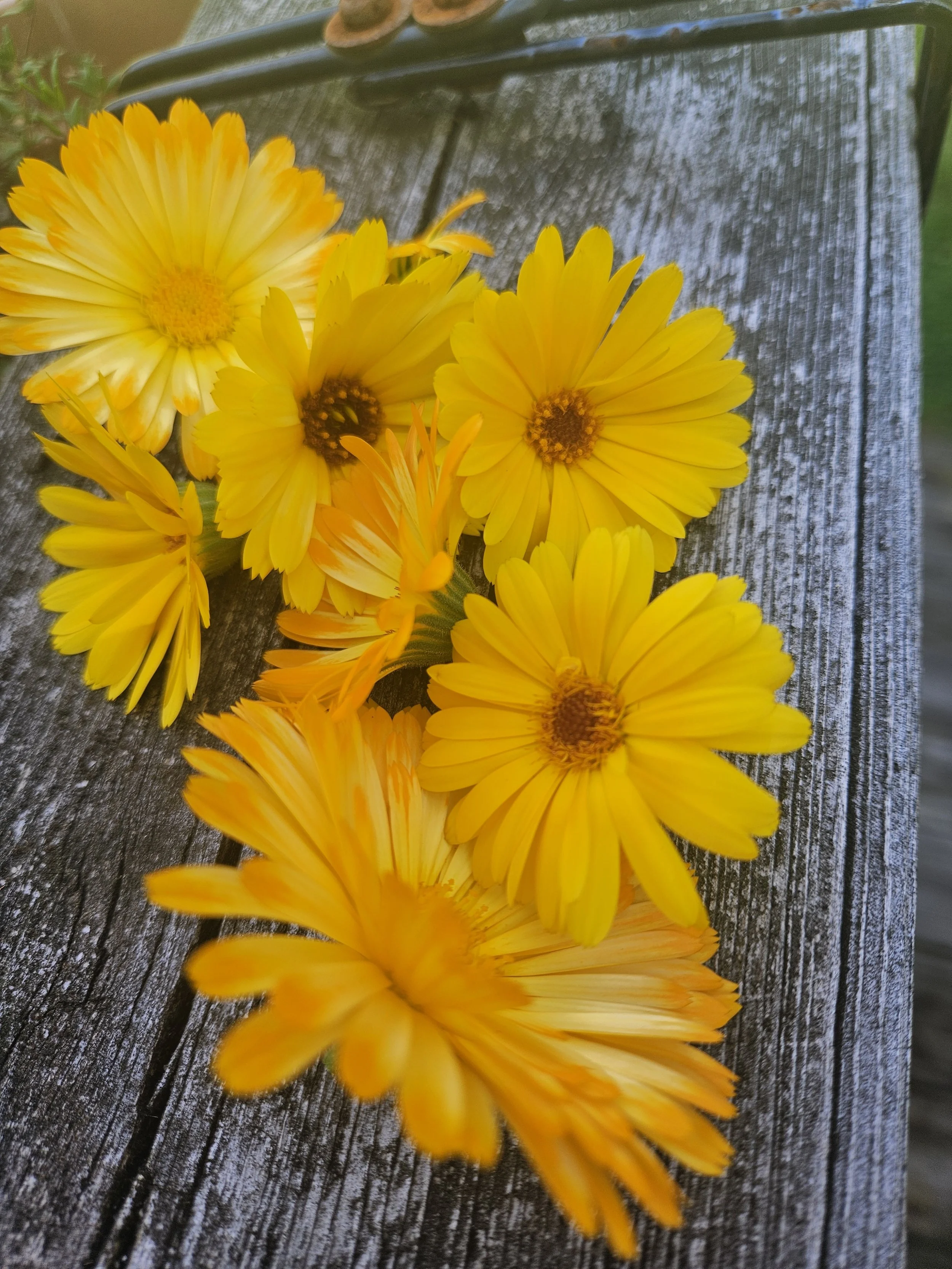The Benefits of Calendula
Calendula grown in my home garden
Calendula officinalis or Jin Zhan Ju, has a golden yellow color to its flowers. In Chinese Medicine, it is known to be neutral, bitter and drying.
Calendula has long been valued in traditional medicine, including the Ayurvedic and Unani systems. Modern uses include carophyllenic ointment (made from carotenoids in the flowers) and marigold tincture. It is also an ingredient in certain homeopathic remedies used to reduce pain and swelling in acute musculoskeletal injuries.
Calendula has also been used as herbal ear drops for acute ear infections in children, its antioxidant properties have been known to protect against lipid peroxieation(which is linked to atherosclerosis, Alzheimer’s disease, liver damage and cancers), its anti-inflammatory properties as well as its ability to improve blood and lymph circulation which can be helpful in removing toxins from the body. It has been used as a mouth wash to reduce gum inflammation and fights bacteria to reduce incidences of periodontal disease. Calendula is considered to be generally safe outside of some people who might be allergic to it and plants in the daisy family.
Calendula has been extensively researched because it contains a wide variety of natural compounds, including carotenoids, flavonoids, glycosides, steroids, sterols, quinones, essential oils, and amino acids, which contribute to its many health effects.
Here are some of its more researched benefits:
Calendula grown in my home garden
Anti-oxidant and photoprotective: Calendula extract has been found to scavenge hydroxyl radicals which can damage DNA, proteins and lipids in cells. It is also protective against UV-induced damage which contributes to premature aging of the skin, sun damage, sun burns and skin cancers by its ability to scavenge superoxide radicals.
Cytotoxic effects: Although none of the extracts demonstrated a direct mitogenic impact on human lymphocytes or thymocytes, C.officinalis inhibited lymphocyte proliferation completely which is potentially significant in the treatment of autoimmune conditions or cancer.
Anti parasitic: Calendula has been found to contain saponins and have also demonstrated anthelmintic action, indicating its ability to treat parasitic infections.
Cardiovascular effect: Studies show that Calendula extract can reduce the size of a heart attack (myocardial infarction). This protective effect appears to occur by transforming the cell damage signals caused by interrupted and restored blood flow into signals that promote cell survival.
Anti-inflammatory effects: Calendula is commonly used for wound healing and to reduce inflammation of the skin and mucous membranes. It has been shown that when applied topically, to support tissue repair and relieve conditions such as scars, blisters, and allergic rashes, often in the form of infusions, tinctures, or ointments. Calendula extract cream has also been shown to help reduce swelling from burns. In laboratory studies, the essential oil from Calendula flowers inhibited the growth of several microorganisms which can make it useful for fungal, yeast or other skin infections.
Hepatoprotective effects: Calendula extracts have shown potential liver-protective properties, helping to guard against cell damage and oxidative stress. The extract has also been found to increase total hemoglobin levels and exhibits effects similar to those of insulin. These findings suggest that the hydroalcoholic extract of Calendula officinalis may possess both anti-diabetic and anti-hyperlipidemic properties.
Come by the clinic for an appointment and you can purchase my home grown, small-batch calendula infused gua sha facial oil
Written by Dr. Emily Siy, DACM on 10/10/25 posted on 10/13/25
You might also be interested in reading: Lower Your Blood Sugar Naturally, Benefits of Echinacea, Lowering Cholesterol with Chinese Medicine
Use the code ‘BLOG’ to receive $25 off an Initial Acupuncture visit or Follow up acupuncture visit
Sources
Babaee, N., Asemi, Z., Asghari, S., Sharifi, G., & Rezaei, S. (2013). Antioxidant capacity of Calendula officinalis flowers extract and prevention of radiation-induced oropharyngeal mucositis. DARU Journal of Pharmaceutical Sciences 7;21(1):18
Lang, A. (2020, April 8). 7 emerging uses of calendula tea and extract. Healthline.
Patil, K., Sanjay, CJ., Doggalli, N., Devi, KR., Harshitha, N. (2022) A Review of Calendula Officinalis - Magic in Science Journal of Clinical and Diagnostic Research. 2022 Feb, Vol-16(2): ZE23-ZE27


